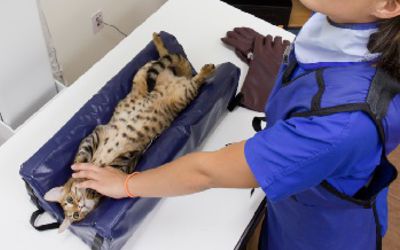
Veterinary radiography has progressed vastly over the years. Modern tools, combined with advanced techniques, ensures that our furry buddies receive the highest care possible. One crucial development in this area is the use of vet x-ray positioning aids. This guide delves deep into the world of x-ray positioning aids, offering you a complete overview.
Understanding Vet X-ray Positioning Aids
Before delving into the specifics, let's first grasp the basic concept. In short, x-ray positioning aids help veterinary specialists attain the most accurate images while making sure minuscule discomfort for the animal. They play a vital role in holding pets in the appropriate position, reducing movement, and ensuring steady, high-quality results.
Why are X-ray Positioning Aids Crucial in Veterinary Practice?
Safety for Both Animal and Technician: Decreasing animal movement is crucial during x-ray processes. This not only promises clear images but also minimizes the risk of radiation exposure for both the animal and the technician.
Consistent Image Quality: Steadiness is key when it comes to x-rays. Vet x-ray positioning aids support in achieving that by ensuring animals are held in the proper posture for clear images.
Reduction in Retakes: If a pet moves during the x-ray operation, the chances are high that the images might emerge unclear. Positioning aids greatly reduce such occurrences, leading to fewer retakes.
Popular Types of Vet X-ray Positioning Aids
Foam Positioners: These featherweight and durable positioners are perfect for supporting the animal's body parts during radiography. They come in various shapes and sizes tailored to fit different animals and body parts.
Sandbags: They're superb for stabilising and positioning. Their weight aids hinder movement during the x-ray process.
Tape and Straps: These can be applied to fasten limbs in place. They're soft on the skin and can be adjusted based on the pet's comfort.
Immobilisation Devices: For pets that are particularly agitated, immobilisation devices can give a safe way to keep them still during the x-ray process without creating any discomfort.
Selecting the Right X-ray Positioning Aids for Your Veterinary Clinic
With the range of aids at one's disposal, selecting the appropriate one might feel daunting. However, consider the following factors:
Type of Animals Treated: A clinic chiefly dealing with small pets might have different needs than one coping with larger animals.
Frequency of Use: Durable positioning aids are a must for busy clinics.
Budget: While it's essential not to compromise on quality, vet clinics also need to make sure they're making budget-friendly decisions.
Tips for Using Vet X-ray Positioning Aids Successfully
Training is Vital: Make sure that all your staff are properly trained in using the aids. This will ensure the safety and comfort of the animals while securing the best possible x-ray images.
Regular Maintenance: Like all machinery, vet x-ray positioning aids also deteriorate with time. Regularly check for wear and tear and substitute them when needed.
Prioritise Comfort: While achieving the flawless image is vital, it's just as essential to ensure the animal's comfort. Always make sure that any restraints or positioners used aren't causing any discomfort to the animal.
Vet x-ray positioning aids have reshaped the field of veterinary radiography. They have not only made certain the generation of clear, high-quality images but have also played a major role in elevating the safety and comfort of the pets undergoing the process. As veterinary experts, it's our duty to guarantee we're equipped with the best tools and knowledge to offer our furry patients the best care available.
If you're seeking to improve your veterinary clinic with the most recent x-ray positioning aids or want more information about them, visit xray4vets. Jump into a realm of advanced veterinary devices and improve the care you offer to your treasured animal patients.